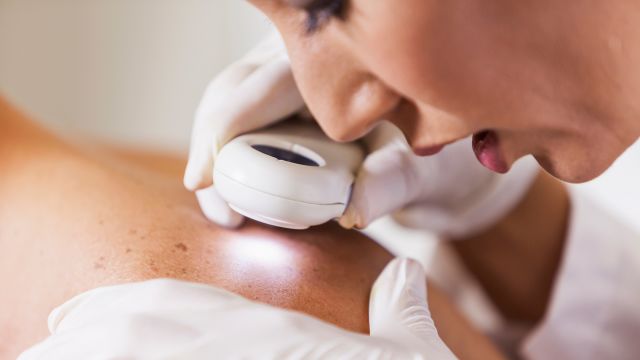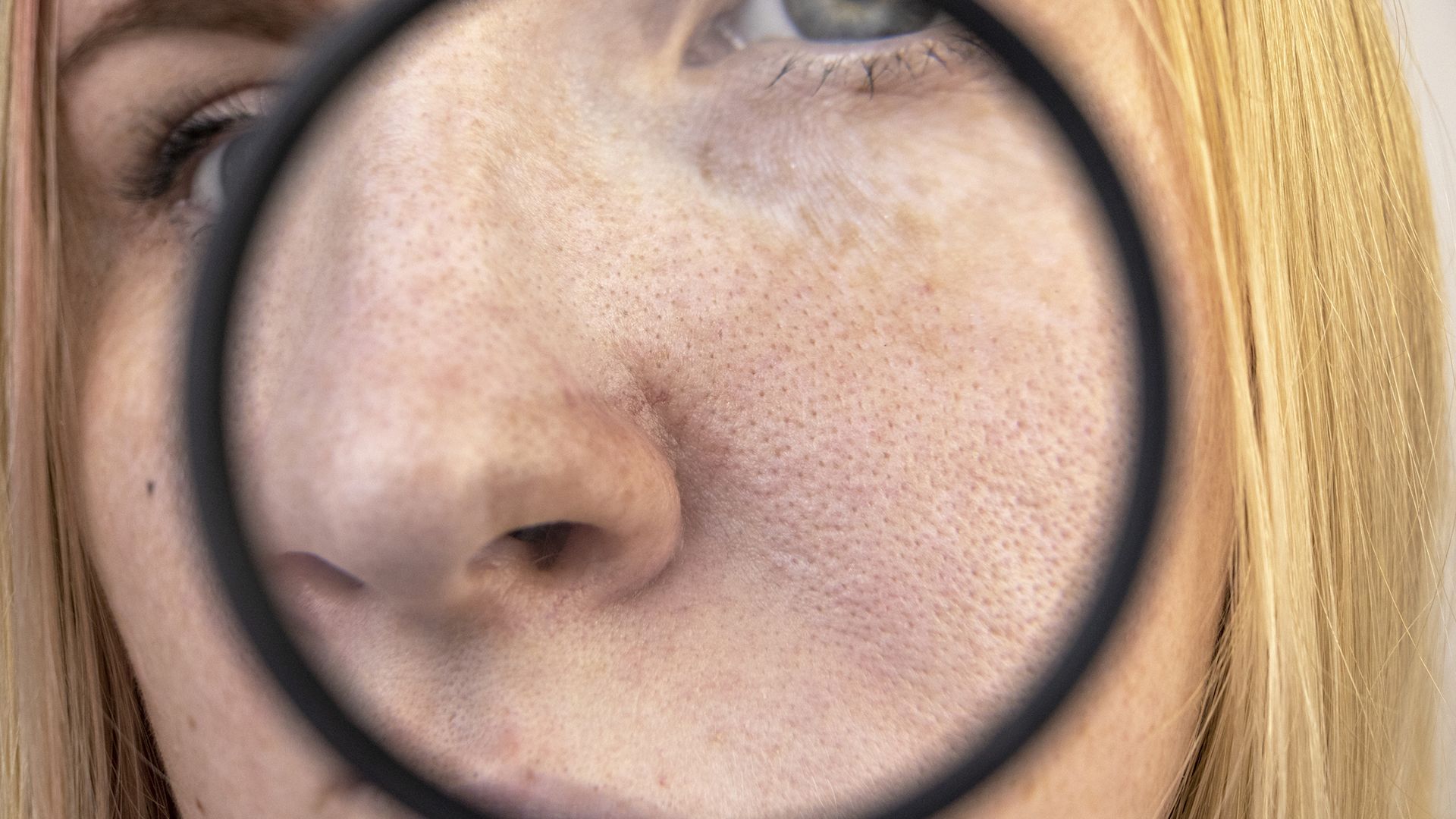Updated on February 13, 2023
The statistics on skin cancer are shocking: More than one in five Americans will develop it by age 70, and more than two people die of skin cancer—usually melanoma—every hour.
But here’s the good news: Even melanoma, the most dangerous type of skin cancer, has a 93 percent relative 5-year survival rate, according to the American Cancer Society (ACS). That number jumps to 99 percent when it’s caught early before it's spread beyond the skin. What’s more, other common skin cancers are rarely life-threatening.
Many experts recommend that people do routine self-checks at home. If you see anything unusual, make an appointment with a dermatologist. Only a trained eye can interpret what you have and what to do next. Some people may also benefit from having total body skin exams done by a healthcare provider on a regular schedule.
Here’s important insight into a variety of potential skin cancer spots, bumps, patches, and moles you might encounter.
Basal cell carcinoma (BCC)
What it typically looks like: A raised, shiny bump that bleeds easily and may have visible, abnormal blood vessels. Basal cell carcinoma may also appear as a pale or pinkish patch on people with light-colored skin. It may have raised borders and crust in the center or appear as a sore that doesn’t heal.
What you must know: About 8 in 10 skin cancers are basal cell carcinomas, according to the ACS. This slow-growing cancer usually does not spread.
Squamous cell carcinoma (SCC)
What it typically looks like: A flat brown or reddish patch on the skin accompanied by a rough or scaly surface. This skin cancer can also appear as a bump or open sore. As the bump or lump grows, it may become dome-shaped or crusty and can bleed. Squamous cell carcinoma usually crops up on areas of the skin most exposed to the sun.
What you must know: While SCC seldom spreads, it’s more likely to spread to other parts of the body than basal cell carcinoma and it becomes more difficult to treat once it has spread. On rare occasions, SCC can also grow underneath a nail, damaging the nail.
Melanoma
What it typically looks like: An asymmetrical mole—meaning one half is a different shape or size than the other. It is usually (but not always) black or brown, has uneven borders, and looks different than the other moles found on the body.
What you must know: Melanoma occurs in less than 5 percent of all skin cancer cases, but is the deadliest and most aggressive form. Early detection is essential.
Dysplastic nevus
What it typically looks like: A large mole with irregular borders. Dysplastic nevi come in varying colors. Typically, the center of the mole is raised, while the outer part is flat.
What you must know: Dysplastic nevus is noncancerous but often gets mistaken for melanoma. If you have a family history of dysplastic nevi, however, your risk of developing melanoma increases.
Actinic keratosis (AK)
What it typically looks like: A rough bump or patch that shows up on sun-exposed areas such as the face, scalp, lips, and back of hands. You often feel it before you see it, since it may just be a rough, flesh-colored patch.
What you must know: AK is a precursor to squamous cell carcinoma about 10 percent of the time.






